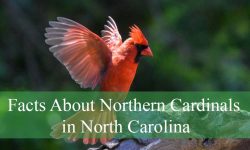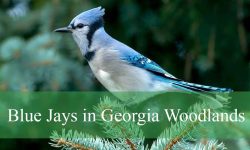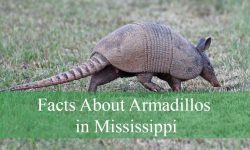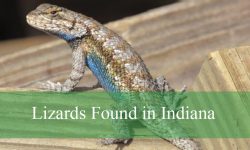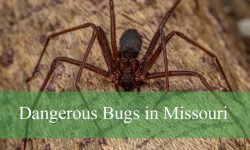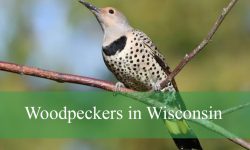Spotting woodpeckers in Colorado has always been one of my favorite parts of birdwatching. Even though I usually spend most of my time chasing hummingbirds with my camera, these energetic, tree-tapping birds are impossible to ignore. Their drumming echoes through the woods, drawing you in before you even see them.
Colorado’s diverse landscapes—ranging from high mountain conifers to cottonwood-lined river valleys—are home to an impressive variety of woodpeckers. Some, like the tiny Downy Woodpecker, might visit your backyard feeders, while others, such as the elusive Black-backed Woodpecker, prefer remote burned forests. Each species has its own quirks and beauty.
In this guide, I’ll share all 13 woodpecker species found in Colorado, complete with pictures, identification tips, and interesting facts. Whether you’re exploring the Rockies or enjoying a quiet park in town, you’ll know exactly which woodpecker is keeping rhythm in the trees.
Common Woodpeckers Found in Colorado
Downy Woodpecker (Dryobates pubescens)
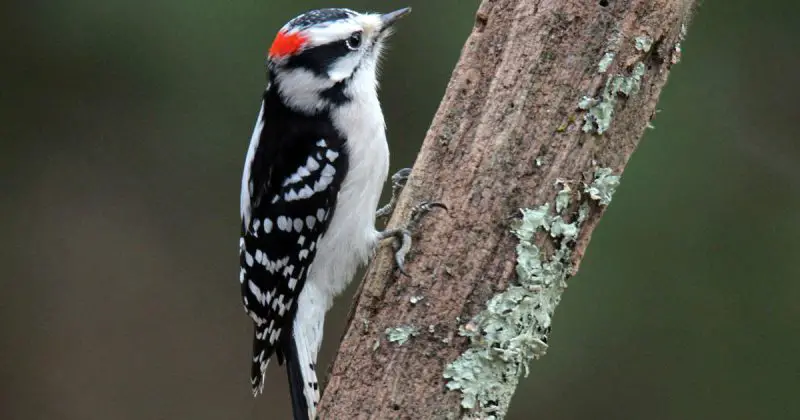
The Downy Woodpecker is the smallest woodpecker in Colorado, measuring about 5.5 to 7 inches in length with a wingspan of 9 to 12 inches. It has a white belly, black wings marked with white spots, and a bold black-and-white striped head. Males can be distinguished by a small red patch on the back of the head, while females lack this marking. Their short bill, about a third the length of the head, is a key feature that helps differentiate them from the similar-looking Hairy Woodpecker.
In Colorado, Downy Woodpeckers are year-round residents, commonly found in wooded areas, parks, orchards, and even suburban backyards. They are highly adaptable and can thrive in both deciduous and mixed forests, as well as riparian zones along rivers. They tend to forage on tree trunks and branches, often tapping lightly in search of insects hidden beneath bark.
Their diet is primarily composed of insects such as beetle larvae, ants, and caterpillars, but they also eat seeds and berries, especially in winter. They are frequent visitors to backyard feeders, often attracted to suet, peanuts, and sunflower seeds. In spring and summer, they can be seen darting among trees, hammering softly while searching for food.
Fun fact: Despite their small size, Downy Woodpeckers are aggressive defenders of their feeding territory and will even chase away larger birds like starlings and grackles.
Hairy Woodpecker (Dryobates villosus)
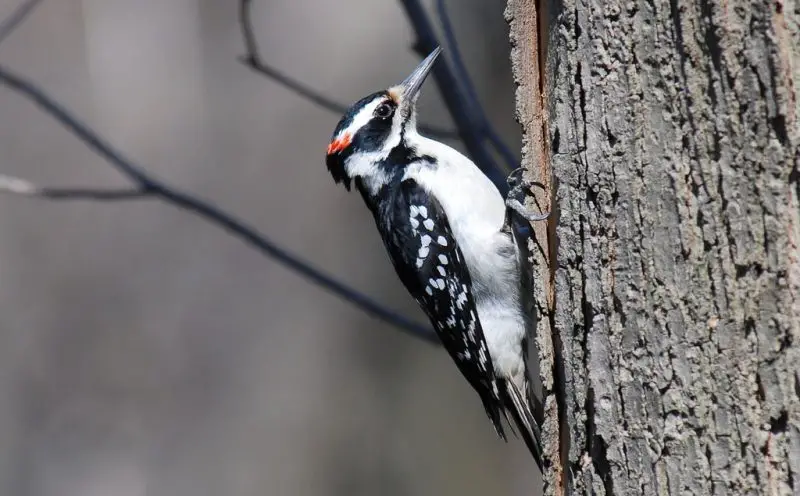
The Hairy Woodpecker is a medium-sized woodpecker, measuring about 7 to 10 inches long with a wingspan of 13 to 16 inches. It has striking black-and-white plumage similar to the Downy Woodpecker, but with a longer bill that’s nearly the same length as its head. Males sport a small red patch on the back of the head, while females do not. Their clean white underparts and black wings with white spots make them easy to recognize once the bill length is noted.
In Colorado, Hairy Woodpeckers live year-round in forests, woodlands, and mountain slopes, ranging from lowland cottonwood groves to subalpine coniferous forests. They tend to prefer larger, mature trees for nesting and foraging, often excavating holes in dead wood to find insects.
Their diet is heavily insect-based, feeding on wood-boring beetle larvae, ants, and moth pupae. They also consume seeds, nuts, and suet from backyard feeders. They are strong and deliberate foragers, striking wood with sharp, powerful blows. Unlike Downy Woodpeckers, they often spend more time on thicker tree trunks.
Fun fact: Hairy Woodpeckers play an important role in controlling insect pests like bark beetles, making them valuable allies for forest health.
Northern Flicker (Colaptes auratus)

The Northern Flicker is one of the largest woodpeckers in Colorado, measuring 11 to 14 inches long with a wingspan of 16 to 20 inches. Unlike most woodpeckers, it has a brownish body with black bars on the back and spotted underparts. In Colorado, the “Red-shafted” form is common, featuring a gray face, red mustache stripe in males, and red wing and tail shafts visible in flight.
This species is highly adaptable and can be found across Colorado in open woodlands, forest edges, grasslands with scattered trees, and even suburban neighborhoods. While they can climb trees like other woodpeckers, they are often seen foraging on the ground, searching for ants and beetles.
Their diet is unique among woodpeckers, with ants making up a large portion of their food intake. They use their long, sticky tongues to lap up insects from the soil. They also eat fruits, seeds, and nuts when insects are scarce. Northern Flickers have a loud, ringing “wick-a-wick-a-wick” call and a distinctive drumming behavior used to claim territory.
Fun fact: Unlike most woodpeckers that drum on wood, Northern Flickers are known to drum on metal objects like gutters or signs to create louder sounds that travel farther.
Red-naped Sapsucker (Sphyrapicus nuchalis)
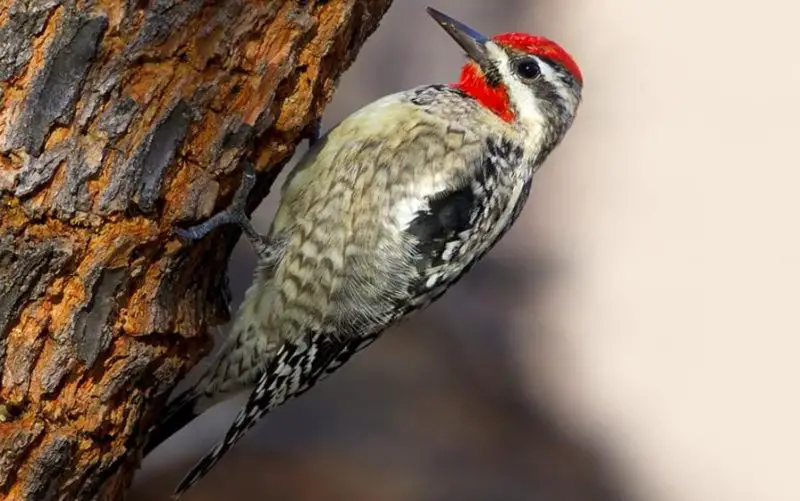
The Red-naped Sapsucker is a medium-sized woodpecker measuring 7 to 8 inches long with a wingspan of about 16 inches. It is easily recognized by its black-and-white patterned body, white wing stripe, and bold red patches on the crown and throat. A black bib separates the red throat from the white underparts, and both sexes have the red cap, though the extent of the red throat can vary.
In Colorado, these birds are typically found in mixed forests, especially aspen groves and riparian woodlands. They are migratory, spending summers in higher elevations and moving to lower areas or southward in winter. Their most distinctive feeding method is drilling rows of small holes, called sap wells, in tree bark to feed on sap and trapped insects.
Their diet consists of tree sap, ants, beetles, and other insects, along with berries and fruits during migration. They often revisit the same sap wells repeatedly, defending them from other birds such as hummingbirds that also enjoy the sweet liquid.
Fun fact: Red-naped Sapsuckers are considered “ecosystem engineers” because their sap wells provide food for many other species, including warblers, orioles, and squirrels.
Williamson’s Sapsucker (Sphyrapicus thyroideus)
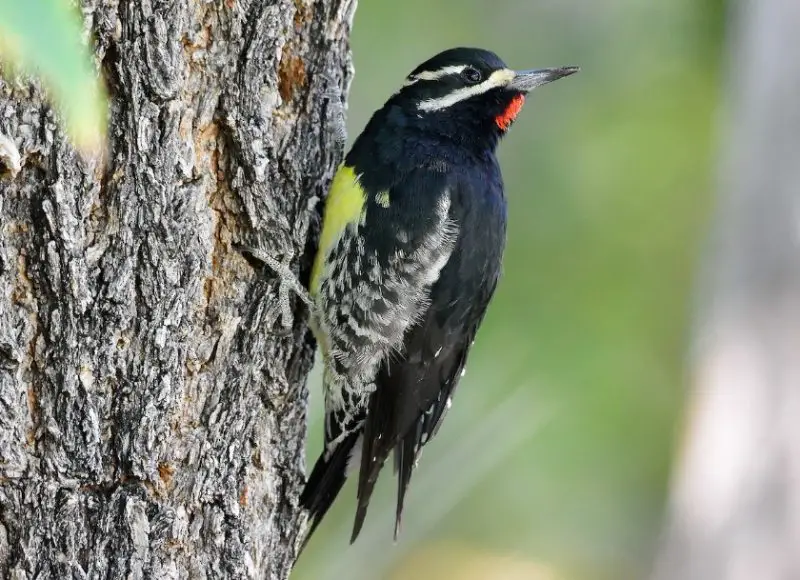
Williamson’s Sapsucker is a striking and somewhat unusual woodpecker because males and females look completely different—a trait called sexual dimorphism. Males have a glossy black back, head, and chest, with a bright yellow belly and a small red throat patch. Females are mostly brown with black and white barring on the back and a pale yellow belly. Both sexes have a white rump and wing patches.
In Colorado, Williamson’s Sapsuckers breed in high-elevation coniferous forests, particularly among pines and firs. They are seasonal residents, spending summers in the mountains and migrating to lower elevations or further south for winter. They feed primarily on sap, drilling neat rows of holes in tree trunks and branches. Insects, especially ants, supplement their diet, along with occasional fruits and seeds.
They are less frequently seen than other woodpeckers because they often forage quietly in dense forest interiors. However, their presence can be detected by the telltale horizontal rows of sap wells on tree bark.
Fun fact: Williamson’s Sapsucker is one of the few North American woodpeckers with such extreme male-female plumage differences that early ornithologists initially thought they were two separate species.
Red-breasted Sapsucker (Sphyrapicus ruber)
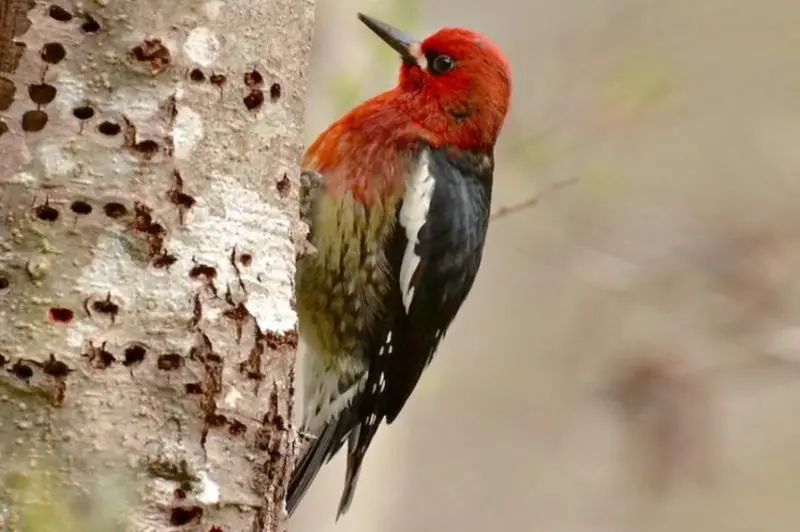
The Red-breasted Sapsucker is a medium-sized woodpecker, measuring about 7.5 to 8.5 inches in length with a wingspan around 16 inches. Its most striking feature is its vivid red head, throat, and upper breast, which contrast sharply with its black wings and white wing bars. The belly is a mix of white and mottled black, often with some yellowish tones. Both sexes look similar, making them one of the easier sapsuckers to identify at a glance.
In Colorado, Red-breasted Sapsuckers are less common and are mainly seen during migration or in winter, often in mixed woodlands or along riparian corridors. They prefer areas with abundant deciduous trees such as aspens, cottonwoods, or willows, where they can drill sap wells. These birds are seasonal visitors, and sightings are more frequent in the western part of the state.
Their diet includes tree sap, which they obtain by drilling neat, horizontal rows of holes in bark. They also consume insects, especially ants and beetles, as well as small amounts of fruit and berries. Like other sapsuckers, they maintain their sap wells and will aggressively defend them against other sap-feeding birds.
Fun fact: Red-breasted Sapsuckers’ sap wells are often used by hummingbirds, which time their visits to coincide with the sapsucker’s feeding schedule.
Yellow-bellied Sapsucker (Sphyrapicus varius)
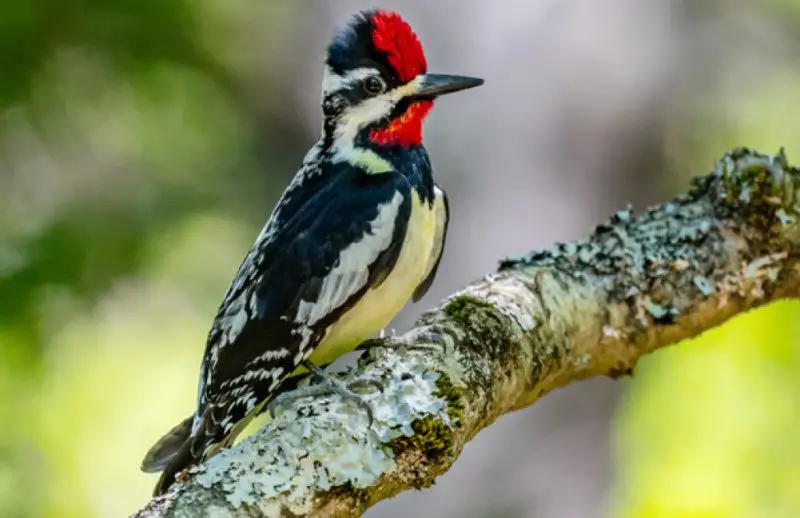
The Yellow-bellied Sapsucker is a slender woodpecker, measuring 7 to 8 inches long with a wingspan of about 16 inches. It has a black-and-white patterned body, a bright red crown, and a pale yellow wash on the belly. Males have a red throat, while females have a white throat. Its bold facial pattern with black and white stripes makes it stand out among other woodpeckers.
This species is primarily a migrant in Colorado, passing through during spring and fall. They are more common in the eastern part of the state and are found in deciduous forests, orchards, and wooded river valleys. During migration, they may also appear in urban parks and large backyards with mature trees.
Yellow-bellied Sapsuckers feed heavily on tree sap, drilling orderly rows of small holes. Insects, especially those attracted to the sap, form an important part of their diet. They will also eat berries during migration. Unlike other woodpeckers, they spend a significant portion of time perched quietly near their sap wells.
Fun fact: Yellow-bellied Sapsuckers are the only woodpecker species in eastern North America that is completely migratory, traveling as far south as Central America for the winter.
American Three-toed Woodpecker (Picoides dorsalis)

The American Three-toed Woodpecker is a medium-sized species, measuring 8.5 to 9.1 inches long with a wingspan of 14 to 15 inches. True to its name, it has only three toes instead of the usual four found in most woodpeckers. Males have a yellow patch on the crown, while females do not. Both sexes have black-and-white barred backs and pale underparts with dark streaking on the flanks.
In Colorado, they are typically found in coniferous forests at higher elevations, especially in areas where trees have been killed by beetles or fire. They specialize in flaking bark off dead or dying trees to find wood-boring beetle larvae. This makes them important in controlling forest pest populations.
Their diet consists almost entirely of insects, particularly beetle larvae, ants, and other invertebrates hidden beneath bark. They rarely visit feeders but can be spotted by their methodical foraging on standing dead trees. They are quiet compared to many woodpeckers, relying more on soft tapping than loud drumming.
Fun fact: Because they thrive in beetle-infested forests, American Three-toed Woodpecker populations often increase after wildfires or insect outbreaks.
Black-backed Woodpecker (Picoides arcticus)
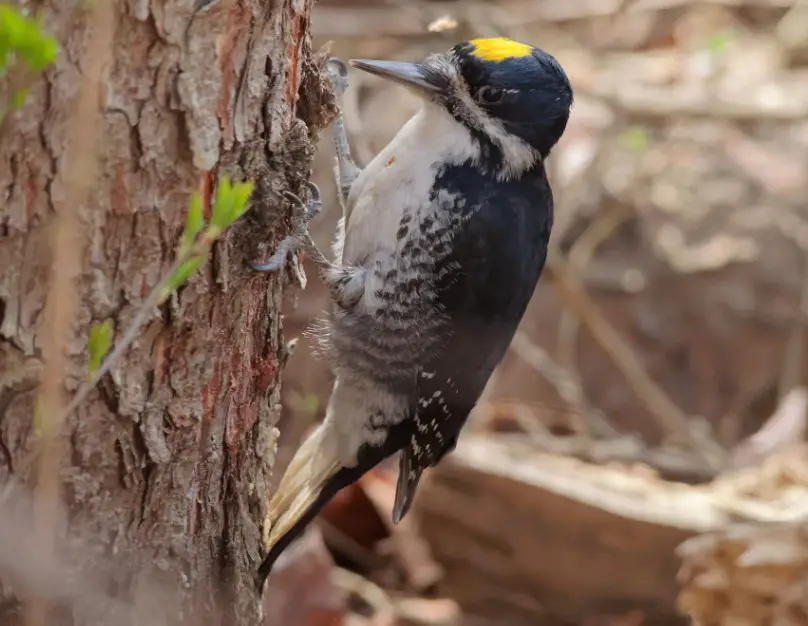
The Black-backed Woodpecker is a rare and specialized bird in Colorado, measuring about 9 inches long with a wingspan of 15 to 16 inches. It has a solid black back, which blends perfectly with charred tree trunks, and white underparts with black barring on the sides. Males have a small yellow crown patch, while females do not.
In Colorado, they are found mainly in recently burned coniferous forests at higher elevations. They are year-round residents but occur in low densities. Their presence is strongly tied to forest fires, as they feed on wood-boring beetle larvae that infest burned trees.
Their diet is almost exclusively insects, especially those found in freshly dead conifers. They use their chisel-like bills to strip away bark in large flakes, leaving behind visible foraging marks. Because they require post-fire habitats, they are often among the first bird species to colonize burned areas.
Fun fact: Black-backed Woodpeckers can detect the sound of beetle larvae chewing inside wood, allowing them to locate prey without relying solely on sight.
Lewis’s Woodpecker (Melanerpes lewis)
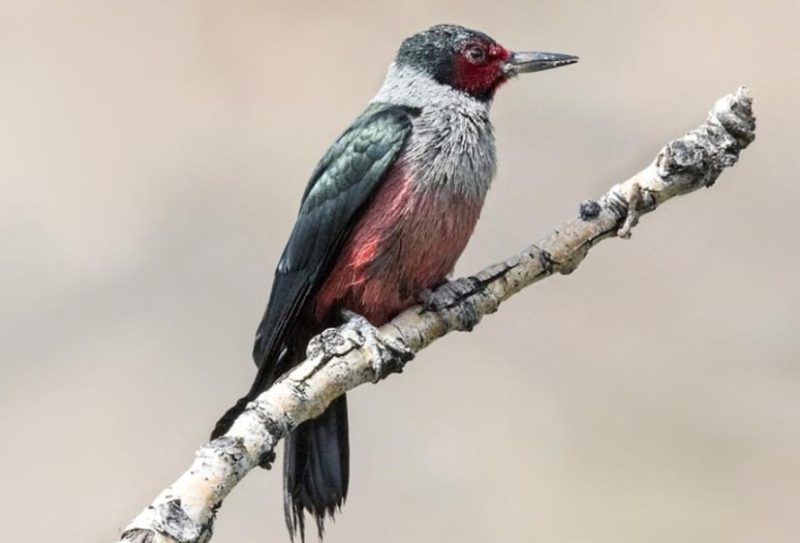
Lewis’s Woodpecker is one of the most colorful woodpeckers in Colorado, measuring 10 to 11 inches long with a wingspan of 19 to 20 inches. It has dark greenish-black upperparts, a pinkish belly, a gray collar, and a deep red face. Unlike most woodpeckers, its wings are long and pointed, giving it a more crow-like flight.
In Colorado, Lewis’s Woodpeckers are found in open pine forests, cottonwood groves, and burned woodland areas. They are more common in the western part of the state and migrate seasonally, spending winters in lower elevations or further south. Unlike most woodpeckers that climb tree trunks, they often catch insects in mid-air, a behavior called “hawking.”
Their diet is varied, including flying insects, nuts, and fruits. In fall, they store acorns and pine seeds in crevices for winter use. They also eat berries extensively during migration. They are often seen perched conspicuously on dead snags, scanning for insect prey.
Fun fact: Lewis’s Woodpecker was named after explorer Meriwether Lewis, who first described the species during the Lewis and Clark expedition in the early 1800s.
Acorn Woodpecker (Melanerpes formicivorus)
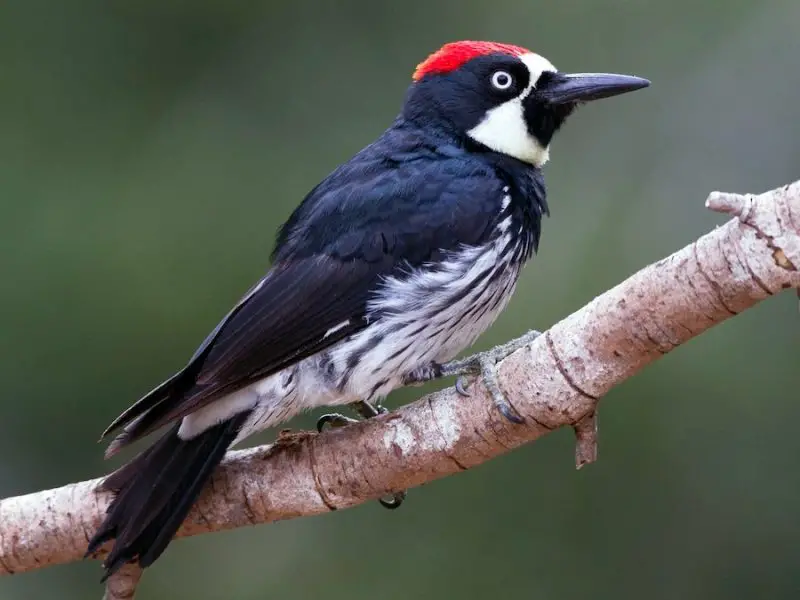
The Acorn Woodpecker is a medium-sized, highly social woodpecker, measuring about 7.5 to 9 inches long with a wingspan of 14 to 17 inches. It has a striking appearance with a black back, white belly, white patches on the wings, a bright red crown, and a white face bordered by black. Males have slightly more extensive red on the head than females. Its bold markings make it unmistakable among Colorado’s woodpeckers.
In Colorado, Acorn Woodpeckers are found mainly in the far southwestern part of the state, inhabiting oak woodlands, mixed pine-oak forests, and areas with scattered large trees. They are year-round residents in these areas, living in family groups that work together to store food. Their unique social structure sets them apart from most other woodpecker species.
Their diet includes acorns, insects, and fruits. They are famous for their “granary trees,” where they drill thousands of small holes into tree trunks or wooden structures and stuff each with a single acorn. This massive food storage system sustains them through the winter months when insects are scarce.
Fun fact: A single granary tree used by an Acorn Woodpecker colony can contain tens of thousands of acorns, each carefully wedged so it won’t fall out.
Red-headed Woodpecker (Melanerpes erythrocephalus)
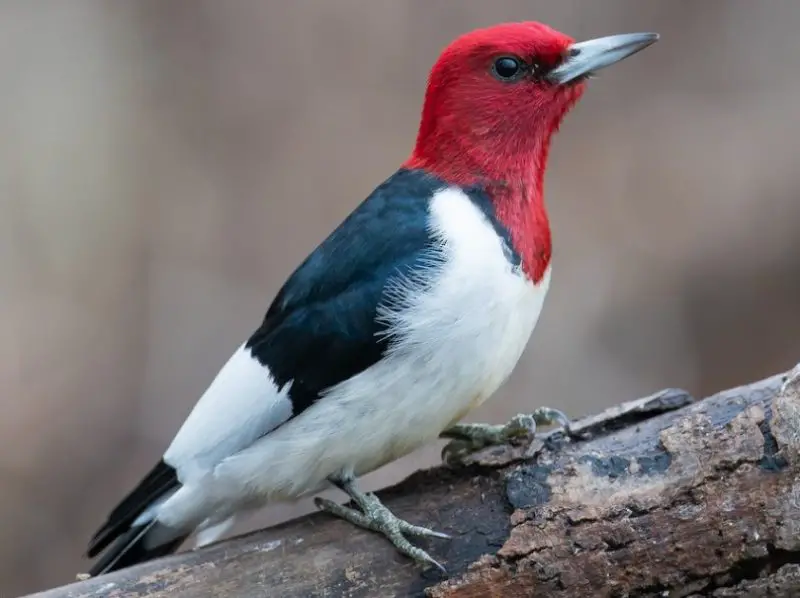
The Red-headed Woodpecker is a striking bird with a solid crimson head, snow-white underparts, and black wings accented with large white patches. It measures 7.5 to 9.25 inches long with a wingspan of 16 to 17 inches. Both sexes look alike, making them easy to identify even at a distance. Juveniles, however, are brownish with mottled heads and gradually acquire their adult colors.
In Colorado, they are mainly found in the eastern plains during summer, inhabiting open woodlands, riparian areas, and farmlands with scattered trees. They migrate south in winter, although a few may remain in milder areas if food is plentiful.
Their diet is remarkably varied, including insects, seeds, fruits, and even small vertebrates. They are one of the few woodpeckers that catch insects in flight. Like the Acorn Woodpecker, they store food for later use, hiding nuts and seeds in tree crevices.
Fun fact: Red-headed Woodpeckers are known to cover stored food with bark or wood chips, effectively hiding it from potential thieves.
Ladder-backed Woodpecker (Dryobates scalaris)
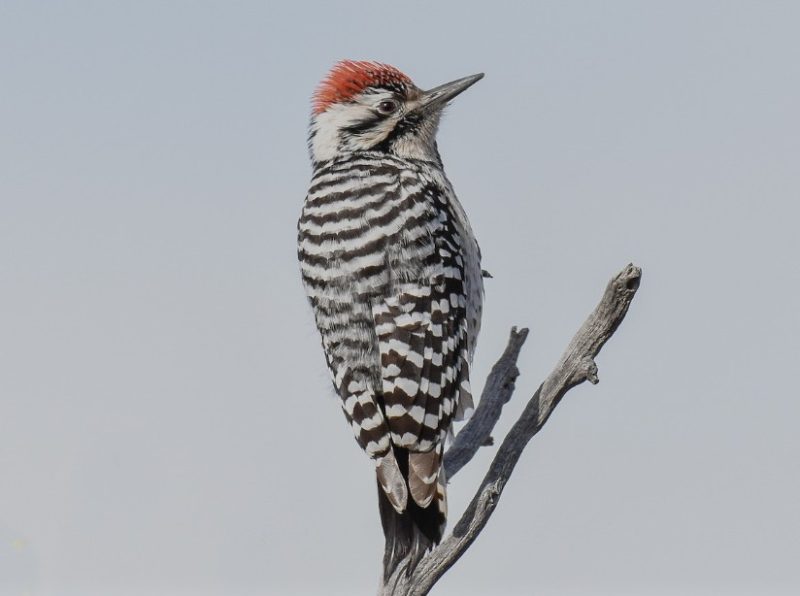
The Ladder-backed Woodpecker is a small, desert-adapted species measuring 6.5 to 7.5 inches long with a wingspan of about 13 inches. It has a black-and-white “ladder” pattern on its back, a white face with black stripes, and a barred belly. Males have a red crown, while females do not. This patterning makes it well-camouflaged against tree bark in its arid habitats.
In Colorado, Ladder-backed Woodpeckers are found mainly in the southeastern part of the state, inhabiting dry scrublands, desert washes, and mesquite or juniper woodlands. They are non-migratory and are well adapted to the sparse tree cover of these environments.
Their diet consists largely of insects such as beetles, caterpillars, and ants, which they glean from branches and cacti. They also eat fruits, seeds, and occasionally cactus pulp. They are quick and agile foragers, moving rapidly along branches and sometimes hanging upside down to reach prey.
Fun fact: Ladder-backed Woodpeckers are often seen foraging on cholla cacti, carefully avoiding the sharp spines while probing for insects hidden inside.
FAQs About Woodpeckers in Colorado
What is the most common woodpecker in Colorado?
The Downy Woodpecker is considered the most common woodpecker in Colorado. It can be found year-round in forests, parks, orchards, and even suburban backyards. Its adaptability to different habitats makes it a frequent sight for both urban and rural birdwatchers.
Do woodpeckers migrate in Colorado?
Some woodpecker species in Colorado migrate, while others are permanent residents. For example, Northern Flickers and Williamson’s Sapsuckers migrate seasonally, while Downy and Hairy Woodpeckers tend to stay year-round. Migration patterns depend on the species and seasonal food availability.
What do woodpeckers eat in Colorado?
Woodpeckers in Colorado primarily eat insects such as beetle larvae, ants, and caterpillars. Many also feed on tree sap, fruits, seeds, and nuts. Some, like the Lewis’s and Acorn Woodpeckers, are known to store food for winter use.
Where is the best place to see woodpeckers in Colorado?
The best places to see woodpeckers in Colorado include forested mountain slopes, riparian corridors, and open woodlands. State parks like Roxborough, Golden Gate Canyon, and Mueller State Park are excellent spots. Even urban areas with mature trees can host several species.
Why do woodpeckers drill holes in trees?
Woodpeckers drill holes for multiple reasons: to find insects under the bark, to create nesting cavities, or to store food such as acorns. Sapsuckers drill shallow rows of holes to feed on tree sap, while other woodpeckers make deeper holes to access insect larvae.
Are woodpeckers protected in Colorado?
Yes, all woodpeckers in Colorado are protected under the Migratory Bird Treaty Act. This means it is illegal to harm them, remove their nests, or disturb their eggs. Birdwatchers and homeowners should focus on non-invasive methods for managing woodpecker activity.
Can I attract woodpeckers to my backyard in Colorado?
Yes. You can attract woodpeckers by providing suet feeders, peanuts, and sunflower seeds. Leaving dead trees or snags standing (if safe) offers natural foraging and nesting opportunities. Planting native fruiting trees can also provide a natural food source.

